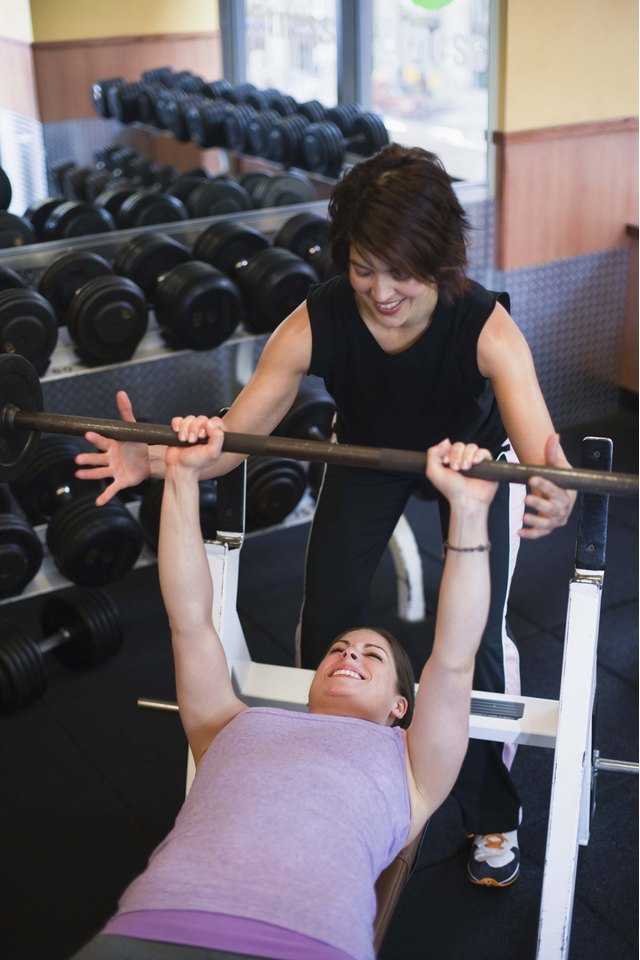What Does a Chest Press Work?

Your chest muscles help you in practical activities such as pushing open doors and catching yourself when you fall. A strong chest also supports good posture and athletic skills such as tackling opponents and throwing balls. The chest press is the best exercise to work the primary muscle of the chest, the pectoralis major, according to a 2012 study sponsored by the American Council on Exercise.
Pectoralis Major
The focus of the chest press is the fan-shaped pectoralis major, which lies at the front of the chest wall. This muscle enables the shoulders, and thus the arms, to move in toward the front of the body and reach up overhead. The pectoralis has two primary “heads.” The chest press focuses on the sternal head – which is the large lower portion – but also engages the clavicular head near the top of the chest at the collarbone as a synergist muscle, or assister.
Other Muscles
The front of the shoulders, called the anterior deltoid, is also used during the chest press as are the triceps muscles. By narrowing your grip on the barbell during a bench press, you can increase the activation of the triceps, explains a study published in a 2005 issue of the “Journal of Strength and Conditioning Research.” The biceps activate to help stabilize the joint during the press.
Variations
A study published in 1995 in the “Journal of Strength and Conditioning Research” found slight variations in muscle activation when performing the chest press from various inclinations and grips. When you push the barbell from a declined position, the clavicular head of the pectoralis major is even less emphasized than when you do the move from a flat or inclined position. Narrow hand spacing on a flat or incline bench increases the emphasis on this region of the chest. Activation of the anterior deltoid increases during an incline bench press. If you want more activation of the triceps, do the press from a flat or declined position and with the narrow grip.
Dumbbells
You can use dumbbells instead of a bar to perform a chest press. The Truman State University researchers who published in the 2005 journal found no difference in the muscle activation of the chest when this substitution was made. They recommend that you use dumbbells occasionally to add variety to your chest routine and break through training plateaus.
References
- American Council on Exercise: ACE-Sponsored Research: Top 3 Most Effective Chest Exercises
- ExRx.net: Bench Press
- Journal of Strength and Conditioning Research: Electromyographic Activity of the Pectoralis Major and Anterior Deltoid Muscles During Three Upper-Body Lifts
- ExRx.net: Pectoralis: Strenal Head
- Journal of Strength and Conditioning Research: Effects of Variation on the Bench Press Exercise on the EMG Activity of Five Shoulder Muscles
Writer Bio
Andrea Cespedes is a professionally trained chef who has focused studies in nutrition. With more than 20 years of experience in the fitness industry, she coaches cycling and running and teaches Pilates and yoga. She is an American Council on Exercise-certified personal trainer, RYT-200 and has degrees from Princeton and Columbia University.
